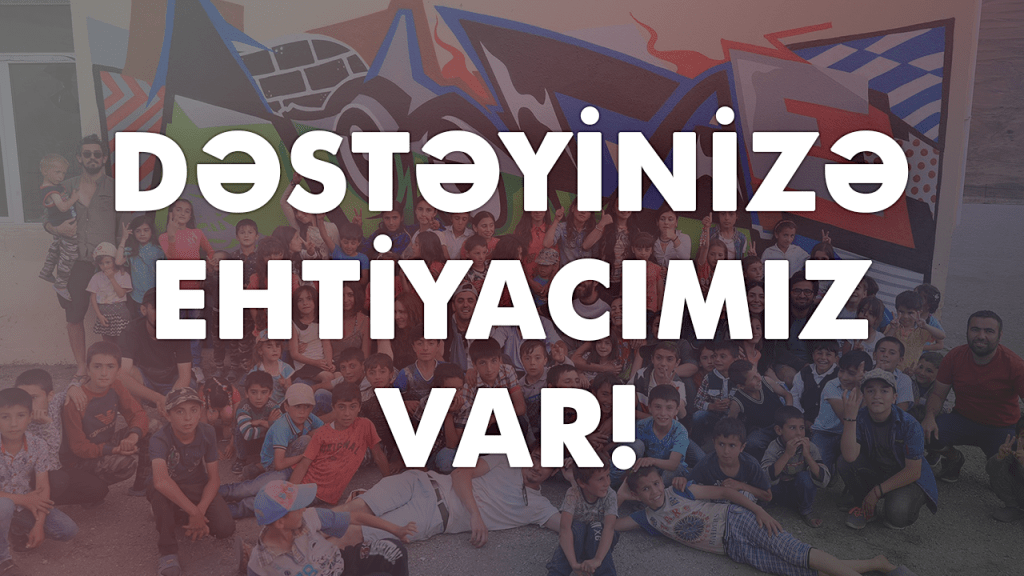Theft of flame: From Prometheus to Petroleum

The Theft of Fire. From Prometheus to Petroleum to open at Kapellhaus on May 31, 2019
It is no coincidence that the legend of Prometheus comes from the same mountains where crude oil was first extracted commercially. In Greek mythology, Prometheus stole fire from the gods and brought it down to humanity, and as a consequence, Zeus punished him by chaining him to a rock in the Caucasus mountains. Azerbaijan, in fitting with this myth, is known as the Land of Fire, and her flames are maintained by Baku, her vestal virgin.
In Azerbaijan’s capital city, oil rigs are in the immediate vicinity of the Zoroastrian fire temple and Yanar Dag, the “burning mountain,” from which natural gas has been seeping since time immemorial. Inherent to the raw material here is an almost spiritual element with great aesthetic potential.
As the bearer of fire and a teacher, Prometheus (which is Greek for “forward-thinker”) is the initiator of human civilization.
From ancient times, Prometheus’ destiny has been a powerful literary theme and a popular motif in the visual arts. The topic has been taken up by numerous poets, writers, painters, sculptors and composers since the Renaissance. The myth has also inspired many philosophical reflections. In religious criticism, Prometheus is the archetypal, bold rebel who initiates liberation from ignorance and religious repression. In the modern era, he stands as a symbol of scientific and technical progress and of humanity’s growing domination of nature. He is thus judged differently by proponents of different philosophies of history: for those with an optimistic view of progress, he represents an allegory of self-emancipating humanity; cultural critics, by contrast, regard the ‘Promethean’ impulse as ambiguous or questionable and have a problem with the human urge to amass limitless, godlike power.
On the one hand, petroleum’s enormous energy density has generated economic progress and prosperity in many parts of the world; on the other, it has also caused enormous ecological damage, geopolitical conflicts and social upheavals.
A glance at the world map shows that the biggest deposits of this commodity are to be found in quite inhospitable regions: the Siberian tundra, the deserts of Arabia, the wastelands of Patagonia or the no-man’s-land of the Arctic. Could this be nature making amends?
Baku has a special role to play in the geopolitics of petroleum, for it was here that oil was first produced on an industrial scale in the 19th century. Azerbaijan’s capital was the source of over half of global production at the beginning of the 20th century and soon became the world’s very first ‘oil city’, attracting all kinds of entrepreneurs and businesspeople. During the Soviet period, oil was extracted without much consideration for the welfare of the local population or ecosystems – over decades this led to ecological disaster, although most of the damage has been cleaned up since Azerbaijan’s independence. The oil boom also enabled considerable sums of money to be invested in the cultural field, including the restoration of the unique oriental old town.
Curators: Alfons Hug, Asli Samadova
The exhibition opens at 19:00 on Friday, May 31, 2019 at Kapellhaus (28 May street, 35) and lasts till June 30. Exhibition regular hours are Wednesday – Sunday, 13:00 – 19:00. Free admission.
List of artists
- Monira Al Qadiri, Germany, Behind the Sun, 2013, single channel video, 10’
- Orkhan Huseynov, Azerbaijan, Oil Drinking, 2011, single channel video, 3’
- Andréas Lang, Germany, 2019, Digging for fire, photography and video
- Marco Montiel-Soto, Germany, Villa Petrolea, 2019, site-specific installation
- Samir Salahov, Azerbaijan, Perfect Wound, 2019, two-channel video animation, 3’
- Tita Salina, Indonesia, 1001st Island – The Most Sustainable Island in Archipelago, 2016, single channel video, 14’11’’
- Sadegh Souri, Iran, Fuel Smuggling, 2017, photography
- George Osodi, Nigeria, Oil rich Nigeria delta, 2003-2007, photography
- Sabina Shikhlinskaya and Chinara Majidova, Azerbaijan, Undelivered Letter, 2019, site-specific installation
Выставка “Похищение огня. От Прометея до нефти” откроется 31 мая 2019 года в Капельхаусе
Действие древнегреческого мифа о Прометее не случайно разворачивается в местности, где люди впервые начали добывать нефть в промышленных масштабах. По легенде Прометей похитил огонь у богов и передал его людям, научив род человеческий пользоваться этим великим благом, за что и принял наказание: Зевс приказал оставить его в горах Кавказа, прикованным цепями к скале. На протяжении веков Азербайджан известен как Страна Огня, а столица Баку аллегорично представляется Весталкой, хранительницей негаснущего пламени.
В Баку нефтяные вышки соседствуют с зороастрийским храмом огня и “Горящей горой” Янар-даг, из недр которой с незапамятных времен на поверхность бесконечными струями выходит природный газ. Природные кладовые этой земли дарят людям также особую, духовную составляющую с большим эстетическим потенциалом.
Передав людям огонь, Прометей (по-гречески это имя означает “предвидящий”) стал основоположником современной цивилизации.
С древних времен судьба Прометея служит яркой литературной темой, а также является популярным мотивом в изобразительном искусстве. Со времен Ренессанса к этой теме обращались многие поэты, писатели, художники, скульпторы и композиторы. Немало философских размышлений было вдохновлено мифом о Прометее. В религиозной критике Прометей – это архетип смелого бунтаря, который инициирует освобождение людей от невежества и религиозного притеснения. В наше время он выступает как символ научно-технического прогресса и растущего доминирования человека над природой. Сторонники разных исторических философий оценивают Прометея по-разному: для людей с оптимистичным взглядом на прогресс он является аллегорией саморазвития человечества, однако есть и критики, которые считают “прометеевский” импульс неоднозначным, сомнительным, а в человеческом стремлении к обладанию безграничной, богоподобной силой видят проблему.
С одной стороны, огромная плотность энергии, свойственная нефти, сделала возможным экономический прогресс и процветание во многих частях мира, но, с другой стороны, нефть также нанесла огромный экологический ущерб, породила геополитические конфликты и социальные потрясения.
Беглого взгляда на карту мира достаточно, чтобы убедиться: самые большие залежи этого ценного вещества обнаружены в самых неблагоприятных регионах планеты: в сибирской тундре, пустынях Аравии и Патагонии, в ледяных просторах Арктики. А не являются ли эти трудности платой, которую природа взыскивает с людей за нанесенный ей ущерб?
Баку играет особую роль в нефтяной геополитике, поскольку именно здесь в девятнадцатом веке впервые стали добывать нефть в промышленных масштабах. В начале двадцатого века в столице Азербайджана вырабатывалось более половины мирового производства нефти, и очень быстро Баку стал первым в мире “городом нефти”, привлекательным для предпринимателей со всего мира. В советский период нефть здесь добывалась без особой заботы о благополучии местного населения и экосистемы – десятилетия такого отношения породили экологические проблемы, однако после обретения Азербайджаном независимости большая часть загрязненных территорий была очищена. Нефтяной бум позволил инвестировать значительные средства также в культурную сферу, включая реставрацию сердца уникального древнего восточного города – Ичери шехер.
Кураторы: Альфонс Хуг, Асли Самедова
Выставка откроется в пятницу, 31 мая 2019 года, в 19:00 в Капельхаусе (улица 28 мая, 35) и продлится до 30 июня. Время для посещения выставки: среда–воскресенье, 13:00 – 19:00. Вход свободный.
Список художников
- Монира Аль Гадири, Германия, “Там, за солнцем”, 2013, одноканальное видео, 10’
- Орхан Гусейнов, Азербайджан, “Нефтепитие”, 2011, одноканальное видео, 3’
- Андреас Ланг, Германия, 2019, “В поисках огня”, фотографии и видео
- Марко Монтиэль-Сото, Германия, “Вилла Петролеа”, 2019, инсталляция для данного выставочного пространства.
- Самир Салахов, Азербайджан, “Идеальное ранение”, 2019, двухканальная видео-анимация, 3’
- Тита Салина, Индонезия, “1001-й остров – самый устойчивый остров архипелага”, 2016, одноканальное видео, 14’11’’
- Садех Соури, Иран, “Контрабанда топлива”, 2017, фотографии
- Джордж Осоди, Нигерия, “Богатая нефтью дельта Нигера”, 2003-2007, фотографии
- Сабина Шихлинская и Чинара Маджидова, Азербайджан,“Письмо не дошло”, 2019, инсталляция





